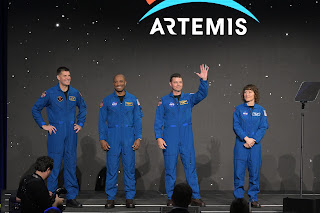One of the best-known amateurs of the past 40 years has become a Silent Key. CQ joins the contesting and DXing communities in mourning the loss of Charles "Chip" Margelli, K7JA, to cancer on May 25. We first received the news from his close friend and CQ Contributing Editor Gordon West, WB6NOA:Chip Margelli, K7JA, operating Field Day, one
of his favorite ham radio activities. (Photos
courtesy Gordon West, WB6NOA)
"Chip left us yesterday at 4pm, after spending weeks putting together Field Day station antennas and gear. That is all he would talk about - a great station on the air! He was ready for Field Day!
He and Janet (KL7MF, Chip's wife of 45 years) fought this fast-spreading cancer for months, with never a word to most anyone about his heroic fight. He passed away peacefully, with dignity, at his home, with Janet and his cat at his side. He gracefully closed his eyes, with piles of Field Day equipment and cables he prepared, ready for deployment, right next to his chair.
Chip never complained, never let on to his fight, and always had a smile for the upcoming Field Day event. So professional. He was always total positive in all that he could do for ham radio operators.
What a gentleman - a true fighter to the end. We are all heartbroken."
Chip was a ham's ham, a contester (and frequent winner), DXer, DXpeditioner (he was part of the ZA1A team that reintroduced ham radio to Albania in 1991 and a member of the 2003 CO0US joint US/Cuban Field Day operation), moonbouncer, weak-signal VHFer, satellite operator and more. Chip spent three decades as the "face" of Yaesu in the United States, attending hamfests, visiting dealers and introducing new gear. After leaving Yaesu, Chip worked for Heil Sound and as CQ Advertising Manager before leaving the hamfest circuit and working behind the scenes at Ham Radio Outlet. He couldn't totally stay home, though, as he continued to be in high demand as a banquet speaker at conventions and hamfests.Chip with his wife of 45 years, Janet, KL7MF
Chip is perhaps best known among the general ham public for his 2005 appearance on "The Tonight Show with Jay Leno," in which he and partner Ken Miller, K6CTW, proved they could send a message faster in Morse code than by texting. Chip was inducted into the CQ Amateur Radio Hall of Fame in 2008 and awarded Russia's E.T. Krenkel medal in 2021
"In a hobby full of really nice and really knowledgeable people," recalled CQ Editor Rich Moseson, W2VU, "Chip was without question one of the nicest and most knowledgeable. He was experienced in nearly every aspect of amateur radio and was always happy to share that knowledge as well as his many ham radio adventures. While Chip was on the CQ staff for only a short period of time, he and Janet have been part of the extended CQ family for many years. More than that, he was always just a good friend. We will miss him greatly."
"OMG!" responded CQ Publisher Dick Ross, K2MGA, when he heard the news. "Chip was the picture of good health! He used to go out running at shows. He and Arnie (Sposato, longtime CQ ad manager, also SK) would be out early on a Sunday to do a few miles together. And he had just retired from HRO after a lifetime at Yaesu. Another old friend gone ... Certainly, we all know of those who were very sick and who we expected to leave us, but too often (others have) left us with no warning and no time to prepare our minds for the inevitable."
Words cannot even begin to express our sorrow. All of us at CQ extend our deepest sympathy and condolences to Janet and their entire family.












